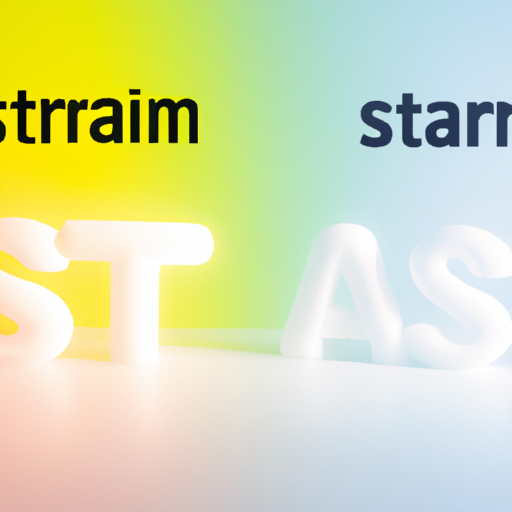Mainstream film models refer to the various approaches and styles that filmmakers use to create movies that appeal to a wide audience. These models can vary greatly in terms of storytelling techniques, visual aesthetics, and overall tone. In this article, we will explore some of the key differences between mainstream film models and how they have evolved over time.

Another mainstream film model is the romantic comedy. These films typically focus on the ups and downs of romantic relationships, often with a comedic twist. Romantic comedies are known for their witty dialogue, charming characters, and feel-good endings. Some popular examples of romantic comedies include When Harry Met Sally, Pretty Woman, and Love Actually.
In contrast to the lighthearted nature of romantic comedies, the thriller genre is another popular mainstream film model that focuses on suspense, tension, and excitement. Thrillers often feature high-stakes situations, complex plots, and unexpected twists. Some well-known thriller films include The Silence of the Lambs, Se7en, and Gone Girl.
One of the most enduring mainstream film models is the coming-of-age story. These films typically follow a young protagonist as they navigate the challenges of growing up and finding their place in the world. Coming-of-age stories often explore themes of identity, friendship, and self-discovery. Some classic examples of coming-of-age films include Stand by Me, The Breakfast Club, and Boyhood.
In recent years, there has been a growing trend towards more diverse and inclusive mainstream film models. Filmmakers are increasingly exploring stories and perspectives that have traditionally been underrepresented in mainstream cinema. This includes films that center on characters from marginalized communities, as well as stories that challenge traditional gender roles and stereotypes.
One example of this trend is the rise of the superhero film model. While superhero movies have been a staple of mainstream cinema for decades, recent years have seen a shift towards more diverse and inclusive superhero stories. Films like Black Panther, Wonder Woman, and Captain Marvel have all featured strong, complex characters from underrepresented backgrounds, and have been celebrated for their positive representation of diversity.
Another example of this trend is the growing popularity of independent films that challenge traditional mainstream film models. These films often feature unconventional storytelling techniques, experimental visuals, and thought-provoking themes. Independent filmmakers are pushing the boundaries of what is considered mainstream cinema, and are creating films that are both artistically ambitious and socially relevant.
Overall, mainstream film models are constantly evolving and changing to reflect the diverse tastes and interests of audiences. From Hollywood blockbusters to independent films, there is a wide range of styles and genres to choose from. Whether you enjoy action-packed thrillers, heartwarming romantic comedies, or thought-provoking dramas, there is sure to be a mainstream film model that suits your preferences. As filmmakers continue to push the boundaries of storytelling and creativity, we can expect to see even more diverse and innovative mainstream film models in the years to come.
Mainstream film models refer to the various approaches and styles that filmmakers use to create movies that appeal to a wide audience. These models can vary greatly in terms of storytelling techniques, visual aesthetics, and overall tone. In this article, we will explore some of the key differences between mainstream film models and how they have evolved over time.

Another mainstream film model is the romantic comedy. These films typically focus on the ups and downs of romantic relationships, often with a comedic twist. Romantic comedies are known for their witty dialogue, charming characters, and feel-good endings. Some popular examples of romantic comedies include When Harry Met Sally, Pretty Woman, and Love Actually.
In contrast to the lighthearted nature of romantic comedies, the thriller genre is another popular mainstream film model that focuses on suspense, tension, and excitement. Thrillers often feature high-stakes situations, complex plots, and unexpected twists. Some well-known thriller films include The Silence of the Lambs, Se7en, and Gone Girl.
One of the most enduring mainstream film models is the coming-of-age story. These films typically follow a young protagonist as they navigate the challenges of growing up and finding their place in the world. Coming-of-age stories often explore themes of identity, friendship, and self-discovery. Some classic examples of coming-of-age films include Stand by Me, The Breakfast Club, and Boyhood.
In recent years, there has been a growing trend towards more diverse and inclusive mainstream film models. Filmmakers are increasingly exploring stories and perspectives that have traditionally been underrepresented in mainstream cinema. This includes films that center on characters from marginalized communities, as well as stories that challenge traditional gender roles and stereotypes.
One example of this trend is the rise of the superhero film model. While superhero movies have been a staple of mainstream cinema for decades, recent years have seen a shift towards more diverse and inclusive superhero stories. Films like Black Panther, Wonder Woman, and Captain Marvel have all featured strong, complex characters from underrepresented backgrounds, and have been celebrated for their positive representation of diversity.
Another example of this trend is the growing popularity of independent films that challenge traditional mainstream film models. These films often feature unconventional storytelling techniques, experimental visuals, and thought-provoking themes. Independent filmmakers are pushing the boundaries of what is considered mainstream cinema, and are creating films that are both artistically ambitious and socially relevant.
Overall, mainstream film models are constantly evolving and changing to reflect the diverse tastes and interests of audiences. From Hollywood blockbusters to independent films, there is a wide range of styles and genres to choose from. Whether you enjoy action-packed thrillers, heartwarming romantic comedies, or thought-provoking dramas, there is sure to be a mainstream film model that suits your preferences. As filmmakers continue to push the boundaries of storytelling and creativity, we can expect to see even more diverse and innovative mainstream film models in the years to come.